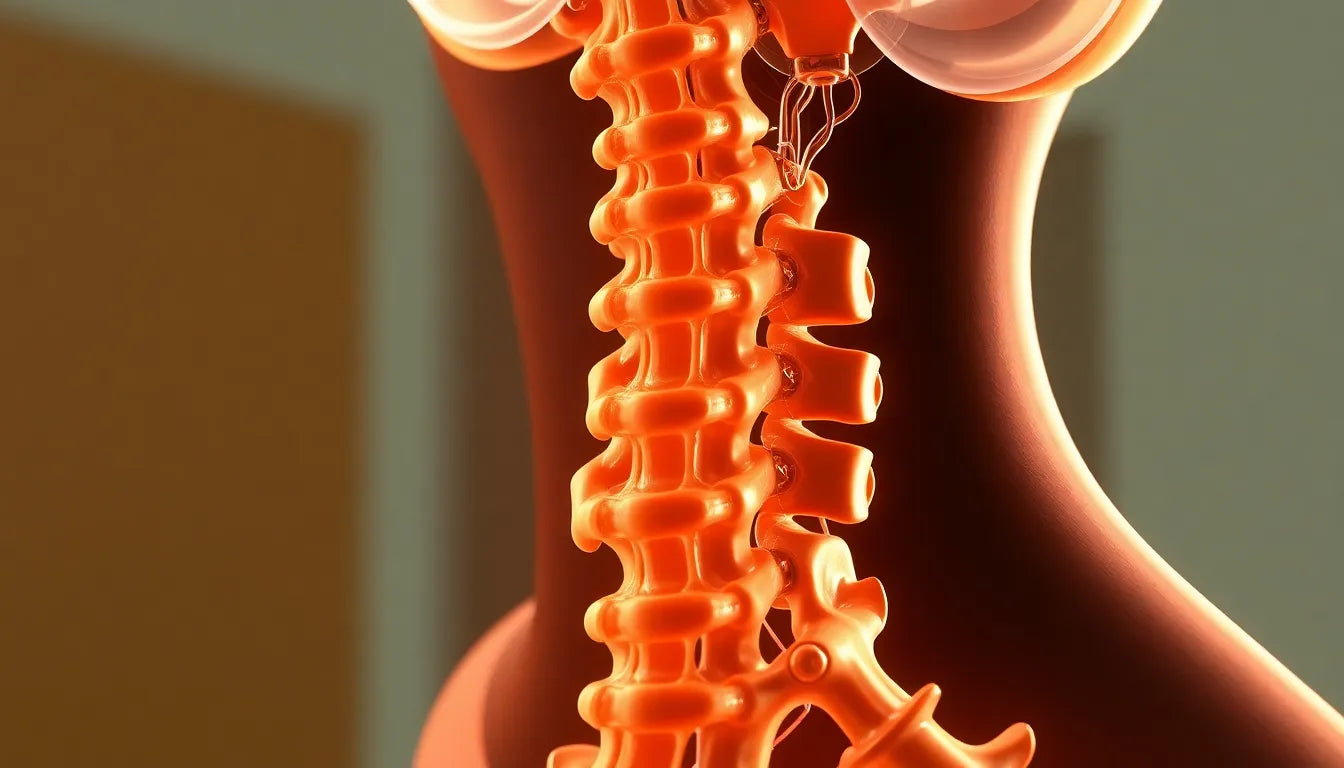In recent years, there has been a noticeable surge in the interest surrounding natural remedies for managing chronic pain. As more individuals seek alternative treatments, apple cider vinegar (ACV) has emerged as a popular choice among those exploring options beyond conventional medicine. One particular area where ACV is gaining attention is in the treatment of sciatica, a condition that can significantly impact daily life.
Understanding sciatica and its impact
Sciatica is a condition characterized by pain that radiates along the path of the sciatic nerve, which runs from the lower back through the hips and buttocks and down each leg. This pain can vary in intensity from mild to severe, often accompanied by sensations such as tingling, numbness, or muscle weakness. The discomfort can be persistent, making everyday activities challenging and affecting the quality of life for those who suffer from it.
Common causes of sciatica include nerve compression due to a herniated disk, bone spur, or spinal stenosis. Inflammation and irritation of the nerve can also contribute to the symptoms. Given the discomfort and disruption sciatica can cause, finding effective relief is a priority for those affected.
Exploring the potential of apple cider vinegar
Apple cider vinegar, a staple in natural health circles, is often praised for its potential health benefits. It is believed to possess anti-inflammatory properties, which could theoretically provide relief for those experiencing sciatic nerve pain, particularly if inflammation is a contributing factor. This has led to a growing curiosity about whether ACV can truly help alleviate sciatica symptoms.
As we delve deeper into the topic, the central question arises: Can apple cider vinegar really ease sciatica pain? While anecdotal evidence and testimonials abound, it's crucial to examine the claims critically and consider the current understanding and evidence surrounding ACV's efficacy in addressing this specific type of pain.
In the sections that follow, we will explore the purported anti-inflammatory benefits of apple cider vinegar, examine the scientific evidence (or lack thereof) supporting its use for sciatica, and discuss how it fits into a broader approach to managing this often-debilitating condition. By gaining a comprehensive understanding, individuals can make informed decisions about incorporating ACV into their pain management strategies.
Investigating the anti-inflammatory claims of apple cider vinegar
The allure of apple cider vinegar (ACV) as a remedy for sciatica largely stems from its reputed anti-inflammatory properties. Inflammation is a common culprit in sciatic nerve pain, making the idea of using a natural anti-inflammatory agent appealing to many. ACV is thought to contain acetic acid, which may contribute to its potential to reduce inflammation. This has led to various suggestions for its use, including topical applications such as foot or body soaks, and oral supplementation.
Some proponents recommend soaking in a warm bath with diluted ACV to potentially reduce inflammation and improve circulation. Similarly, consuming a diluted mixture of ACV with water or other ingredients like honey and lemon is suggested by enthusiasts as a way to harness its benefits from within. However, it is important to note that while these methods are popular in home remedy circles, they are primarily supported by anecdotal evidence rather than scientific research.
Examining the lack of direct scientific evidence
Despite the widespread anecdotal claims supporting the use of ACV for sciatica, there is a notable absence of direct scientific evidence or clinical trials to substantiate these claims. Medical professionals often caution against relying solely on ACV for sciatica relief, highlighting the need for evidence-based practices in managing such conditions. The lack of rigorous scientific studies leaves the efficacy of ACV for sciatica largely unverified, suggesting that it should not be considered a primary treatment option.
Experts emphasize the importance of consulting healthcare professionals for a comprehensive approach to sciatica management. This includes identifying the underlying causes of sciatica, which can vary from nerve compression to structural issues, and tailoring treatment plans accordingly. While ACV may offer some relief as a complementary approach, it should not replace conventional medical treatments.
Integrating holistic and herbal approaches
ACV is often recommended alongside other natural remedies as part of a holistic approach to managing sciatica. This includes combining it with ingredients like honey, lemon, chamomile tea, or Epsom salts, which are believed to enhance its anti-inflammatory and soothing effects. These combinations are often touted for their potential to support overall nerve health and provide a broader range of benefits beyond just symptom management.
Holistic health advocates stress the importance of addressing the root cause of pain rather than solely focusing on symptom relief. This perspective encourages individuals to explore a variety of natural remedies while also considering lifestyle changes and other therapeutic interventions. By integrating ACV into a broader wellness strategy, individuals may find a more balanced approach to managing their sciatica symptoms.
The commercial aspect of apple cider vinegar supplements
The popularity of ACV has also given rise to its inclusion in commercial supplements marketed as "nerve support" blends. These products often combine ACV with vitamins and other botanicals, promising to enhance nerve health and alleviate pain. While these supplements may offer some benefits, it is crucial to approach them with caution and a critical eye.
Consumers should be aware of the marketing tactics used to promote these products and ensure they are choosing supplements that are backed by credible research and quality standards. Consulting with healthcare professionals before starting any new supplement regimen is advisable to avoid potential interactions and ensure safety.
In summary, while apple cider vinegar holds a place in the realm of natural remedies for sciatica, it is essential to approach its use with a balanced perspective. The lack of scientific evidence supporting its efficacy for sciatica means it should be considered a complementary strategy rather than a standalone treatment. By combining ACV with other holistic approaches and conventional medical advice, individuals can create a more comprehensive plan for managing their sciatica symptoms.
Medical skepticism and apple cider vinegar
While apple cider vinegar (ACV) is often celebrated in natural health circles for its potential benefits, skepticism remains prevalent within the medical community regarding its efficacy in treating sciatica. Many healthcare professionals categorize ACV's role in nerve pain relief alongside other food myths or unsubstantiated home remedies. This skepticism stems from a lack of direct scientific evidence or clinical trials confirming ACV's effectiveness for sciatica or nerve pain relief.
In evidence-based medicine, treatments are typically validated through rigorous scientific studies. The absence of such studies for ACV means that while it may be used as a complementary approach, it should not replace conventional medical treatments. Consulting healthcare professionals for a comprehensive sciatica management plan is crucial, as they can provide guidance tailored to individual needs and the underlying causes of the condition.
Educating users on sciatica and remedies
Understanding the various causes of sciatica is essential for effectively managing the condition. Sciatica can result from nerve compression, inflammation, or structural issues within the spine. Remedies like ACV may offer some relief if inflammation is a factor, but they are unlikely to address mechanical causes such as herniated disks or bone spurs.
For those considering integrating apple cider vinegar into their pain management strategy, it is important to view it as a complementary measure. Primary interventions, such as physical therapy, ergonomic adjustments, and medical treatments, should remain the focus. ACV can be part of a broader wellness approach, potentially enhancing the overall strategy when used alongside other holistic remedies.
Frequently asked questions
Can apple cider vinegar cure sciatica?
No, there is no scientific evidence that apple cider vinegar can cure sciatica. While it may offer some relief if inflammation is a contributing factor, it should not replace medical treatment or interventions.
How should apple cider vinegar be used for sciatica?
Common methods include topical applications like foot soaks or oral supplementation. However, it is important to consult a healthcare professional before use to ensure it is appropriate for your specific situation.
Are there any risks associated with using apple cider vinegar for sciatica?
Yes, excessive consumption of apple cider vinegar can lead to digestive issues, and topical use might irritate the skin. Always dilute ACV and use it cautiously to minimize potential risks.
What are alternative treatments for sciatica?
Physical therapy, ergonomic adjustments, and medical interventions such as medications or surgery are more established treatments for sciatica. Natural remedies, including ACV, can complement these treatments but should not be the sole approach.
In conclusion, while apple cider vinegar remains a popular natural remedy, its role in managing sciatica should be viewed with caution due to the lack of scientific validation. By integrating ACV as a complementary measure alongside evidence-based treatments, individuals can pursue a more comprehensive approach to managing their sciatica symptoms effectively.
Sources
- IfixYourSciatica.com. "Home remedy angle and call for root-cause diagnosis."
- Better Health Alaska. "ACV among other home solutions."
- Cedar Stone Spa. "Spa/soak routine."
- Louetta Foot and Ankle. "Evidence-based skepticism."
- South Pointe Physical Rehab. "Describes ACV’s mineral content and anti-inflammatory claims."
- Bellevue Reporter. "Supplement marketing with ACV as an ingredient."
- Medical News Today. "Reviews for anti-inflammatory evidence in arthritis context."



